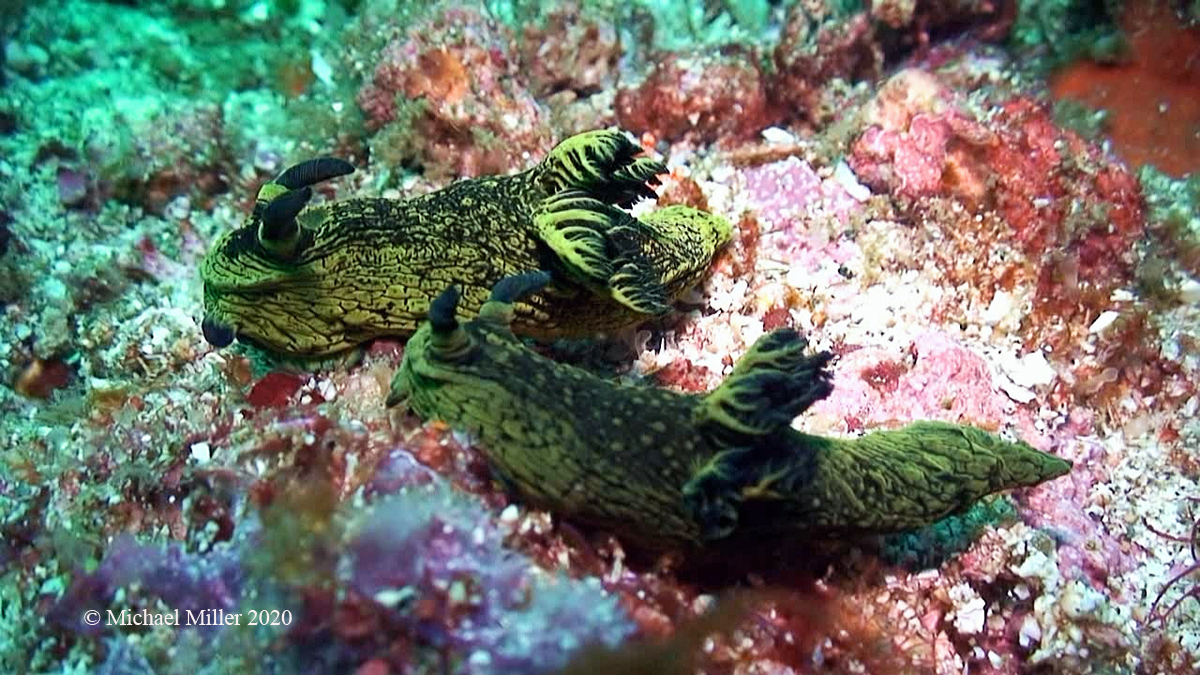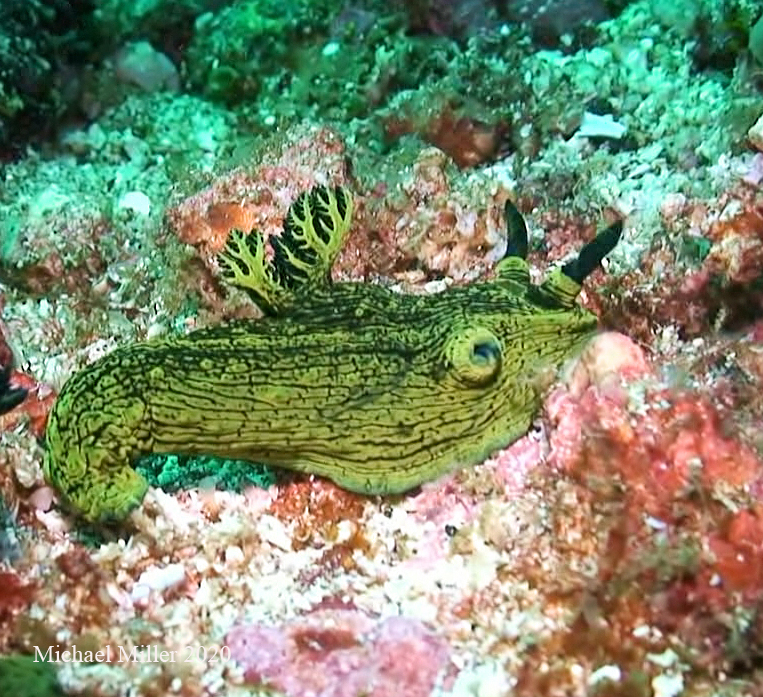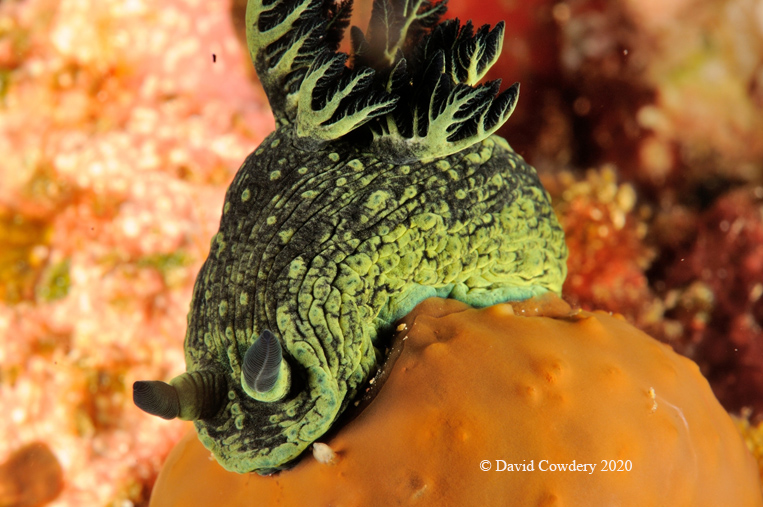 |
Image courtesy of Michael Miller (Webmaster)
Komodos, Indonesia
Oct. 2007
Video Freeze Frame
|
Image courtesy of Michael Miller Komodos, Indonesia  |
Tambja c.f. tenuilineata Miller & Haagh, 2005 - Maybe, maybe not.
Mike Miller originally identified his photos as Tambja tenuilineata. As I tried to confirm his ID, I had to wonder. What is Tambja tenuilineata? Back in 2007 Mike ran this species from its type locality in Queensland, Australia, with a write up by Dave Mullins , but the photos used in that BOW look nothing like the photo Gosliner et al. (2018) used in NSSI 2nd Edition. So what is this species Mike shot in Komodo, Indonesia? It is closer to the NSSI photo (page 44), but look close. Mike's animals are similar, but the black lines on the body (for which the name was derived) are much finer that those shown in NSSI, and look nothing like those on Mullins specimens. I am confused. Mullins animals have blue on the tips of the gill and rhinophores, mentioned in NSSI, suggested in Miller's specimens so this is a shared characteristic. Mullins animals all have a smooth dorsum, similar to a degree to the photo in NSSI, while the dorsum of Mike's and Dave's critter (below) are not smooth at all having a crenulated appearance, particularly between the rhinophores and gill. None of the specimens presented on Bill Rudman's Sea Slug Forum have such and appearance, either. I am not sure this is Tambja tenuilineata. To add credence to my thoughts is the locality Mike took the photos in. Tambja tenuilineata is known only from New Zealand and Queensland, Australia. This is a far cry from Komodo, Indonesia, but we do know of hundreds of species that live across this wide geographic range. My thoughts are that this is a new undescribed Tambja. We really need specimens, to sequence, to determine this for sure, but with Indonesia's refusal to allow collecting for scientific purposes, we may never know. Reference: Miller, M.C. & Haagh, J.M. 2005. A new species of the dorid nudibranch genus Tambja Burn, 1962 (Gastropoda, Opisthobranchia) from Australasia. Vita Malacologica, 3: 55
Dave Behrens Sammamish, WA 98074 Aug., 2020 Send Dave Behrens email at davidwbehrens@gmail.com Send Mike Miller email at mdmiller1@cox.net |
Image courtesy of Dave Cowdery
|
WEBMASTER'S NOTES:(POST) After the initial posting of this BOW on Sunday Aug. 30th., Dave Cowdery from down under was quick to realize that he had also photographed our subject in Indonesian waters! As the reader can see there is a quite remarkable visual fit to our BOW subject! So what is going on here? Are we talking about different color and body texture differences that might suggest a morphological variation of Tambja tenuilineata? As Dave Behrens as suggested above, it might be a new species! Dave Cowdery has suggested the same, and I am going to add my voice to the chorus! I want to thank Dave for taking the time to dig out his images of our subject and lending his thoughts on our identification dilemma!
Send Dave Cowdery email at divec@ozemail.com.au |

Attention all you Sluggers, and you know who you are! The NSSI 2nd edition is now available in ebook PDF and book form . The hard back version will become available Nov. 1st. Both will cost $65 (individually). You will need to jump through a few hoops to get the electronic version as pdf distribution is protected by Adobe ID!! Please read the following to enable reading your electronic purchase! This new 2nd Edition is updated and reorganized, including 185 new species. Among other features, the new edition includes additional photographs of species, an identification key, and an up-to-date classification reflecting the latest evolutionary relationships. The Indo-Pacific represents the largest expanse of tropical ocean in the world, stretching from the Indian Ocean coast of southern Africa and the Red Sea to the central Pacific of the Hawaiian Islands, Easter Island and the Marquesas. This region supports the most diverse marine fauna of any place in the world for most groups of marine organisms. The nudibranchs and sea slugs are no exception to this rule; there are about 3,000 described species of these organisms in the world and at least 40% of these have been found exclusively in the Indo-Pacific tropics. This book illustrates 2,138 Indo-Pacific nudibranchs and sea slugs, including many undescribed species.
|

|

